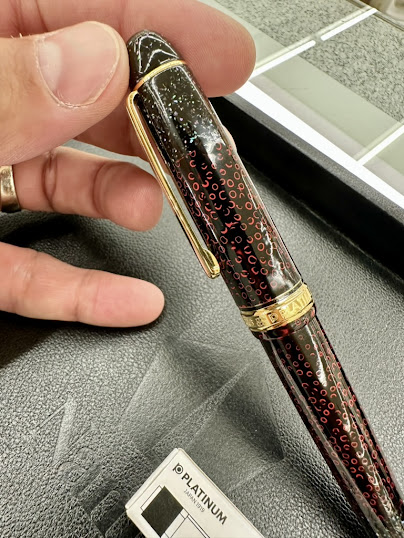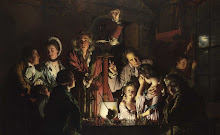A Look Into Traditional Japanese Arts and How They Continue to Thrive in Modern Times
I’m very excited about today's blog because I get to talk about a few of my favorite things. As mentioned in previous posts, you know about my enthusiasm for Japanese culture. Japan is rich in history and traditions, many of which are passed down through generations, whether within families or to eager students who are passionate about a particular craft. Those who seek to learn a craft often gravitate toward specific masters and their art styles, pursuing them to learn these unique techniques. I want to discuss a few of these practices, how they’ve shaped Japanese culture, and how they are still practiced and integrated into everyday items today.
Dinnerware is something we probably overlook every day. We place our food on it, eat from it, toss it in the sink, wash it, and put it away. Life seems simple. But long ago, dishes were not so easy to care for. Plates and serving dishes were often made of wood, which would rot after continued use. It wasn't until the discovery of the Japanese lacquer tree over 2,500 years ago that a solution was found. The sap from this tree became the key to creating a seal for not only dinnerware but also for many other items. This sap, once extracted and colored, is turned into a lacquer known as Urushi. This remarkable substance was not only a durable sealant but also an effective adhesive. The Japanese didn't limit the use of Urushi to dinnerware; it eventually found its way onto jewelry, home furnishings, and even buildings. Among the many styles of Urushi, I want to focus on the art from the Aomori Prefecture, better known as Tsugaru-Nuri.
Although the practice of applying Urushi to items has been around for over 2,500 years, Tsugaru-Nuri is actually the newest of the Urushi techniques, having been developed only about 300 years ago. I appreciate this style because it diverges from traditional practices while still maintaining the same spirit, work ethic, and beauty that has defined this art form for centuries.
There are four styles of Tsugaru-Nuri, but I want to focus on just one for this portion: Nanako-Nuri. I’ll include a link below for those interested in exploring the other styles. Nanako-Nuri's distinctive pattern is created using rape blossom seeds from the canola plant. Urushi is applied to the surface, and the seeds are attached. Once the Urushi dries, a special tool is used to remove the seeds, forming raised circular patterns across the piece. A different colored lacquer is then applied to fill in the gaps, leaving only the tops of the circular patterns to contrast with the outermost layer. Tsugaru-Nuri coatings typically consist of 24 layers and can go up to 48, a process that can take months to complete on a single item. Below, you’ll find an example of this style along with a picture of the process.
Tsugumichi Matsuyama, Piece No.20, 2019
I love this style of Urushi because of the intricate detail of the tiny circles. A darker lacquer is used to form the base coating and shapes, while a contrasting lacquer is applied to emphasize the small circles. Their size and appearance closely resemble fish eggs, adding a unique texture to the design.
Pay attention to the attached seeds that create the pattern on this item. These seeds are carefully removed using a special type of spatula before the remaining layers of lacquer are applied and polished.
I collect and write with fountain pens every day; it’s one of my favorite hobbies. There’s something incredibly satisfying about sitting down to take notes, writing in my journals, and listening to the nib glide across the paper as it lays down ink. I think of writing as a specialized art, and the pen I use is the tool to achieve it. So, when I visited a pen shop a couple of weeks ago, I was pleasantly surprised to find a fountain pen crafted by a local artisan who has since moved away. The pen is covered in this style of work, and I got it for an amazing price—I simply couldn’t leave without it. You can see it below.
It is here where you can see the sheen of the lacquer itself makes it hard to take a photo of it.
Now that I’ve shared my love of pens and writing, this naturally leads into the next art form I’d like to discuss: Japanese calligraphy, or Shodo, which means “The Way of Writing.”
Shuji is a required subject taught in Japanese elementary schools to teach basic writing form, helping students learn the proper strokes of the characters. As they grow older, some people elevate this practice to an art form known as Shodo. The style of Shodo can vary greatly depending on the calligrapher, much like individual handwriting. This beautiful art form can be seen on special buildings, statues, and is often sold as artwork to be given as gifts, displayed in homes, or even featured on scrolls.
Writing is a personal and deeply pleasurable experience. In Japan, this experience is celebrated and shared through calligraphy. Like paintings, calligraphy can be clear and precise or abstract. The strokes can vary in size and style, from large and bold to delicate and intricate. The only limits are the words or phrases the characters convey.
The above work is a portrait of Ono no Michikaze, who is considered the founder of Japanese calligraphy. The artwork depicts him preparing to set down his brush after completing some lettering. At the top of the piece, you can see an example of one of his famous writings. Although it may not be as refined as modern works, it has a distinct style. The characters resemble drops of ink swirling in water. The strokes are fine yet appear meticulously controlled, and you can discern where he began each character based on the ink's shading.
As I mentioned earlier, Japanese calligraphy is not only a fundamental skill but also a form of art. Many Japanese people have a deep appreciation for it, having been exposed to it from an early age. They can read and understand the characters, and they often find themselves mesmerized by the way an artist shapes the lettering. It’s fascinating to see how something that might seem like a basic function of life and society is revered so highly. They truly celebrate the beauty of words. Below are some examples of more modern works.
Notice how the size of the waves makes Mount Fuji appear small in comparison. Due to the coloring, Mount Fuji is almost overlooked in the background. You can almost feel the struggle of the people trying to escape the towering wave in their boats. The wave's tremendous force contrasts sharply with the calm sky. As with the previous work, this print uses dark lines, solid colors, and gradients effectively.
All three of these art styles are still practiced today, albeit not to the same extent as during their inception. Japan takes great pride in preserving its cultural heritage, and what’s remarkable is that many people there don’t even think of it as art—they simply see it as tradition. They are a proud nation, eager to share their captivating work with the world and showcase the effort involved in creating these beautiful pieces. I highly recommend visiting Japan at least once in your lifetime. Whether for the art or the culture, it’s an experience worth having.
(No date) The history of ukiyo-e and its expansion around the world |. Available at: https://www.kumon-ukiyoe.jp/en/history.php (Accessed: 09 August 2024).
Five greats of Japanese woodblock printing (2023) nippon.com. Available at: https://www.nippon.com/en/nipponblog/m00062/ (Accessed: 09 August 2024).
The floating world of ukiyo-e overview (2001) Library of Congress. Available at: https://www.loc.gov/exhibits/ukiyo-e/intro.html#:~:text=In%20Ukiyo%2De%2C%20each%20image,carved%20the%20designs%20into%20a (Accessed: 09 August 2024).
Japanese, K.H. (no date) Katsushika Hokusai: Under the wave off kanagawa (Kanagawa Oki Nami Ura), also known as the Great Wave, from the series thirty-six Views of Mount Fuji (Fugaku Sanjūrokkei): Japan: Edo period (1615–1868), The Metropolitan Museum of Art. Available at: https://www.metmuseum.org/art/collection/search/45434 (Accessed: 09 August 2024).
Kokontozai: Kashiyuka’s shop of Japanese Arts and Crafts / [urushi] (no date) Casa BRUTUS. Available at: https://casabrutus.com/categories/design/121853 (Accessed: 09 August 2024).
Portrait of ono no michikaze (no date) Portrait of Ono no Michikaze|Collection|The Museum of the Imperial Collections, Sannomaru Shozokan. Available at: https://shozokan.nich.go.jp/en/collection/object/SZK002947 (Accessed: 09 August 2024).
Shodo Japanese calligraphy (no date) Shodo Japanese Calligraphy | Japan Experience. Available at: https://www.japan-experience.com/plan-your-trip/to-know/understanding-japan/japanese-calligraphy (Accessed: 09 August 2024).
Styles (no date) TSUGARU NURI (Aomori Lacquerware Federation). Available at: https://www.tsugarunuri.org/en/styles.html (Accessed: 09 August 2024).




.jpg)





Hi Art, I happened to also choose Japan as my country for our last assignment! It seems many people did, I'm thinking its because we all wanted to see and understand more art from Japan. I also analyzed The Great Wave off Kanagawa in my blog, and I am still shocked that it is a woodblock print! I also touched on how woodblock prints were some of the first artwork that was more accessible to the general population, beforehand, art was only for the wealthy. It made me happy to think more people could enjoy such beautiful expressions and work!
ReplyDelete